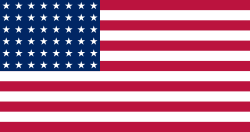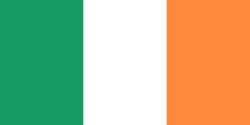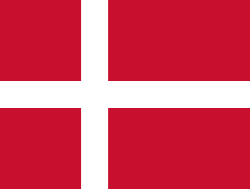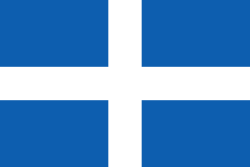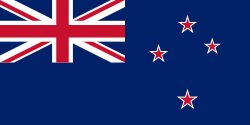Friidrott vid olympiska sommarspelen 1932
| Friidrott vid olympiska sommarspelen 1932 | |
 | |
| Anläggning | Los Angeles Olympic Stadium, Los Angeles, Kalifornien, |
|---|---|
| Datum | 31 juli-7 augusti 1932 |
Friidrotten vid de olympiska sommarspelen 1932 i Los Angeles bestod av 29 grenar och hölls mellan 31 juli och 7 augusti 1932 på Los Angeles Olympic Stadium. Antalet deltagare var 386 tävlande från 34 länder.
En vecka innan spelen började stängde IAAF av den framgångsrike finska långdistanslöparen Paavo Nurmi från all tävlan för brott mot amatörreglerna.
Medaljfördelning
| Medaljfördelning | |||||
|---|---|---|---|---|---|
| Placering | Nation | Totalt | |||
| 1 | 16 | 13 | 6 | 35 | |
| 2 | 3 | 4 | 4 | 11 | |
| 3 | 2 | 4 | 2 | 8 | |
| 4 | 2 | 0 | 1 | 3 | |
| 5 | 2 | 0 | 0 | 2 | |
| 6 | 1 | 3 | 5 | 9 | |
| 7 | 1 | 1 | 2 | 4 | |
| 8 | 1 | 0 | 2 | 3 | |
| 9 | 1 | 0 | 0 | 1 | |
| 10 | 0 | 2 | 3 | 5 | |
| 11 | 0 | 1 | 0 | 1 | |
| 0 | 1 | 0 | 1 | ||
| 13 | 0 | 0 | 1 | 1 | |
| 0 | 0 | 1 | 1 | ||
| 0 | 0 | 1 | 1 | ||
| 0 | 0 | 1 | 1 | ||
Medaljörer
Herrar
Damer
| Gren | Guld | Silver | Brons |
| 100 meter Detaljer... | Stanisława Walasiewicz | Hilda Strike | Wilhelmina von Bremen |
| 80 meter häck Detaljer... | Babe Didrikson | Evelyne Hall | Marjorie Clark |
| 4 x 100 meter stafett Detaljer... | Mary Carew | Mary Frizzel | Nellie Halstead |
| Höjdhopp Detaljer... | Jean Shiley | Babe Didrikson | Eva Dawes |
| Diskuskastning Detaljer... | Lillian Copeland | Ruth Osburn | Jadwiga Wajs |
| Spjutkastning Detaljer... | Babe Didrikson | Ellen Braumüller | Tilly Fleischer |
Deltagande nationer
Totalt deltog 386 friidrottare från 34 länder vid de olympiska spelen 1932 i Los Angeles.
|
|
|
Externa länkar
 Wikimedia Commons har media som rör friidrott vid olympiska sommarspelen 1932.
Wikimedia Commons har media som rör friidrott vid olympiska sommarspelen 1932.
| ||||||||||||||
| |||||||||||
Media som används på denna webbplats
Pictograms of Olympic sports – . This is an unofficial sample picture. Images of official Olympic pictograms for 1948 Summer Olympics and all Summer Olympics since 1964 can be found in corresponding Official Reports.
Olympic Rings without "rims" (gaps between the rings), As used, eg. in the logos of the 2008 and 2016 Olympics. The colour scheme applied here was specified in 2023 guidelines.
Olympic Rings without "rims" (gaps between the rings), As used, eg. in the logos of the 2008 and 2016 Olympics. The colour scheme applied here was specified in 2023 guidelines.
Författare/Upphovsman: B1mbo, Licens: CC BY-SA 2.5
Drawing of a gold medal, based on Olympic rings.svg.
Författare/Upphovsman: B1mbo, Licens: CC BY-SA 2.5
Draw of a silver medal, based in Olympic rings.svg.
- The joining of the rings is not correct drawn.
Författare/Upphovsman: B1mbo, Licens: CC BY-SA 2.5
Drawing of a bronze medal, based on Olympic rings.svg.
US Flag with 48 stars. In use for 47 years from July 4, 1912, to July 3, 1959.
Flag of Second Polish Republic and later People's Republic of Poland in period from March 29, 1928 to March 10, 1980. Red shade used here is HTML "vermilion" #E34234. Proportion 5:8.
The Canadian Red Ensign used between 1921 and 1957.
This image has compared for accuracy (mainly colors) using an image from World Statesmen. The only change is making the maple leaves green from red. This image has compared for accuracy (mainly colors) using an image from World Statesmen. The most recent version of this image has changed the harp into one with a female figure; see [http://flagspot.net/flags/ca-1921.html FOTW
The Canadian Red Ensign used between 1921 and 1957.
This image has compared for accuracy (mainly colors) using an image from World Statesmen. The only change is making the maple leaves green from red. This image has compared for accuracy (mainly colors) using an image from World Statesmen. The most recent version of this image has changed the harp into one with a female figure; see [http://flagspot.net/flags/ca-1921.html FOTW
Författare/Upphovsman: F l a n k e r, Licens: CC BY-SA 2.5
Flag of the Kingdom of Sardinia (1851-1861) and of the Kingdom of Italy (1861-1946). Use: Civil flag and ensign. In a governmental or a military context, the crowned version (see Crowned version) was always used (as State flag and naval ensign).
Flag of the Philippines (1919–1936)
Flag of South Africa, used between 1928 and 1982. It is identical to the 1982 to 1994 version except that the shade of blue is darker. It is also known as the "Oranje-Blanje-Blou".
Flag of South Africa, used between 1928 and 1982. It is identical to the 1982 to 1994 version except that the shade of blue is darker. It is also known as the "Oranje-Blanje-Blou".
The flag of Brazil from 1889 to 1960 with 21 stars.
Flagga Grekland (1822-1969) och (1974-1978), Årsdag flagga Grekland (1978 - )
The Star of India Red Ensign
Författare/Upphovsman: Gutten på Hemsen, Licens: CC0
Flag of Norway with colors from the previous version on Commons. This file is used to discuss the colors of the Norwegian flag.
Flag of Portugal, created by Columbano Bordalo Pinheiro (1857–1929), officially adopted by Portuguese government in June 30th 1911 (in use since about November 1910). Color shades matching the RGB values officially reccomended here. (PMS values should be used for direct ink or textile; CMYK for 4-color offset printing on paper; this is an image for screen display, RGB should be used.)
Flag of Hungary from 6 November 1915 to 29 November 1918 and from August 1919 until mid/late 1946.
Flag of Second Polish Republic and later People's Republic of Poland in period from March 29, 1928 to March 10, 1980. Red shade used here is HTML "vermilion" #E34234. Proportion 5:8.
Pan-Slavic flag. Emerged from 1848 Prague pan-Slavic conference, or interpretations of the resolutions of the conference. Drawn by Fibonacci.
Civil flag of Haiti.
Flag of the Philippines (1919–1936)
Flag of Mexico (1916-1934)






